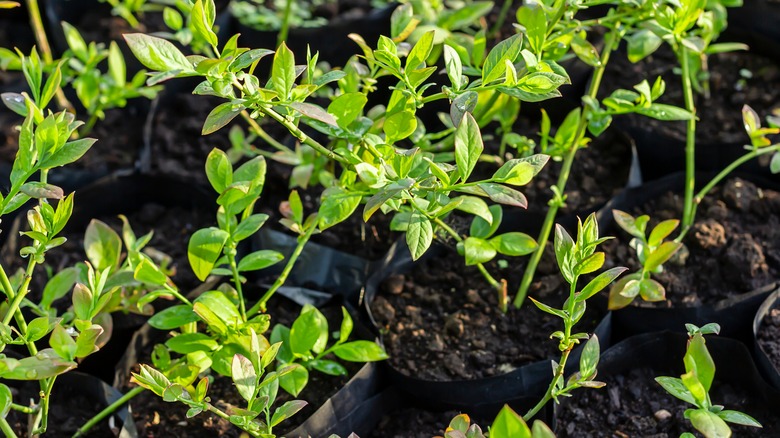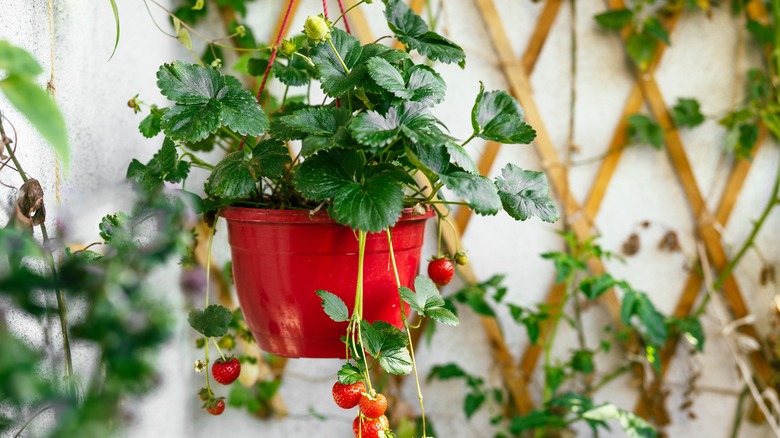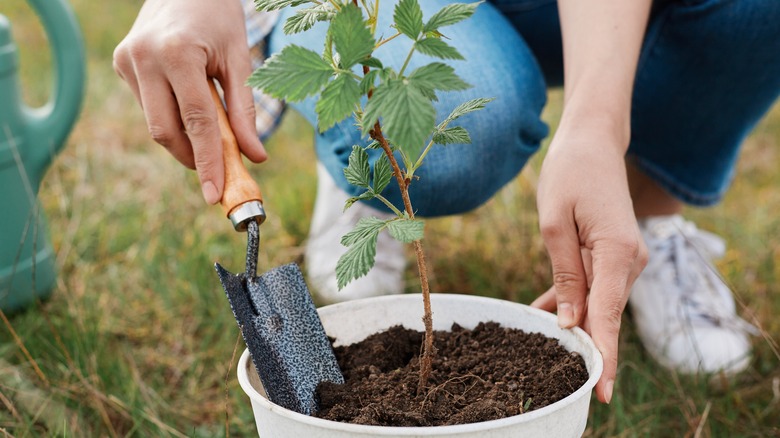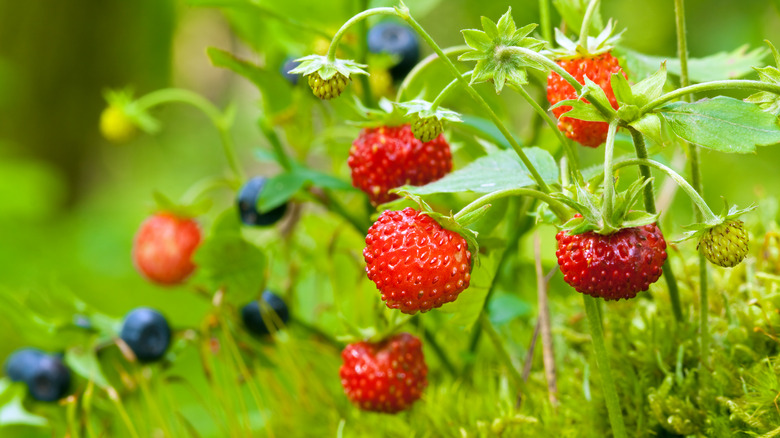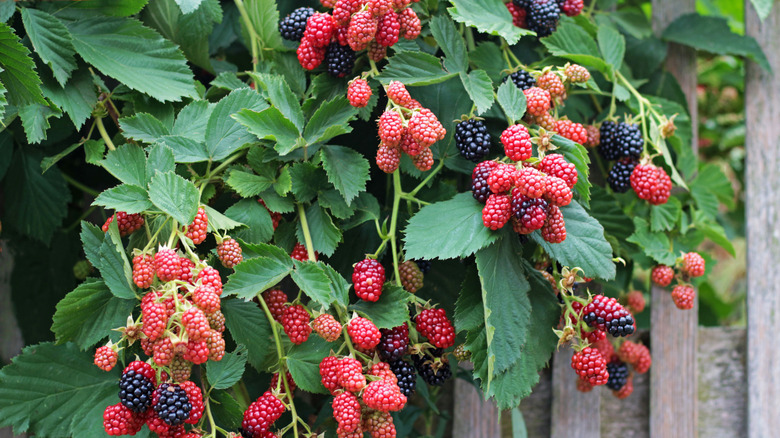The Best Berries To Grow In Containers (And Ones That Aren't Worth Planting)
Growing berries in contains is a great option for those with limited space. Whether you're an urban gardener or living in an apartment, you can grow berries on your balcony, patio, or windowsill. Strawberries, blueberries, and raspberries are great berries to grow in containers. They adapt well to the limited constraints of pots and still give you fresh fruit.
However, not all berries are suitable for growing in containers. They may grow too large, or have requirements that can't be met when planted in a container. When deciding which type of berries you want to try, make sure to consider the care they need. Think about the size of the pot, the type of soil they grow best in, and their sunlight and water requirements. By choosing the right type of berry plant to grow in your container garden, you'll set yourself up for plenty of tasty harvests throughout the season.
What is the easiest berry to grow in containers?
Strawberry plants are one of the easiest berries to grow in containers. Strawberries offer numerous advantages that make them a popular choice since they are adaptable and versatile. Aside from regular watering, occasional fertilizing, and pruning of runners, strawberries are easy to grow and care for. Many varieties are well-suited, flexible to container life, and offer continuous harvests throughout the season.
Their shallow root systems allow strawberry plants to thrive in pots, hanging baskets, and window boxes. When planting your strawberries, you'll want to find a pot that's at least eight inches deep and between 10 to 12 inches wide. This pot will easily fit two to three strawberry plants and is deep enough to accommodate their root systems. Everbearing, day-neutral, and June-bearing are three types of strawberry varieties that are great in containers. By choosing a mix of these strawberry types, you can enjoy harvests throughout summer and the rest of the growing season.
Other berries that grow well in pots
In addition to strawberries, raspberries and blueberries are also well-suited for containers. Dwarf varieties of raspberries, such as Ruby Beauty or Raspberry Shortcake, reach two to three feet tall and are self-supporting. They don't require trellising, complicated supporting structures, or lots of space, simplifying their care and making them ideal for pots.
Blueberries are another great choice, particularly the half-high varieties. As their name suggests, they are bushier and have shorter statures. Northsky and Northblue are half-high varieties bred for cold resistance and a compact growth habit. They can withstand colder climates and still produce abundant harvests. When planting, make sure to plant them in an area with optimal growing conditions to ensure they have the best chance of producing fruit. Raspberries and blueberries are easy to grow and care for and need well-draining, fertile soil and full sun. They also need consistent watering.
Can you plant strawberries and blueberries in the same container?
Strawberries and blueberries are excellent garden companions and do well when planted together. Planting them together is especially practical if you have limited space. While they have slightly different pH requirements, they both grow in similar conditions, making them great companions for large containers. Strawberries grow best in pH ranges of 5.3 to 6.5, whereas blueberries prefer pH conditions of 4.5 to 5.5. Strawberries are more adaptable to changes in pH, and this slight overlap makes them compatible companions. Strawberries and blueberries both need well-draining soil and abundant sunlight. If you decide to plant them together, plant them in a location that receives at least six to eight hours of sunlight per day.
When planting them together, you'll also want to make sure you get a large enough container to support both plants. Look for a container that's at least 24 inches or larger in diameter. This way, each plant has space to grow and access nutrients without competition or overcrowding. Strawberries and blueberries also complement each other due to their different growth habits. Strawberry plants sprawl horizontally, creating a fruit-bearing ground cover to keep vertically growing blueberries free of weeds.
What berries aren't worth planting in containers?
While container gardening opens up the possibility of growing berries in limited spaces, blackberries, cranberries, and currants may not be the best choices. They present certain challenges that make growing in pots a little more difficult. Typically, blackberry plants get large and sprawling with vines that need support. They also produce long canes that can be difficult to manage in a container. Without proper care and the space to grow, they can quickly outgrow their pot and become unruly. However, there are dwarf varieties, such as Baby Cakes, made specifically for containers. But if you choose to go with a non-dwarf variety, your blackberry plant may be better in the garden.
Cranberries are another type of berry that generally doesn't do well in containers. Their natural habitats are bogs, which have specific soil and water requirements. This is hard to recreate in pots. Additionally, they spread and creep horizontally, making them better suited for large, shallow areas rather than containers. Currants, on the other hand, can be grown in containers but require a lot of water to produce tasty and juicy fruit. If not frequently watered, the plant becomes stressed, leading to dry and suboptimal fruit harvests. For gardeners interested in growing berries in limited spaces, stick to berries that do well in pots, like strawberries, blueberries, and raspberries, and choose the right varieties for small spaces and your climate.
